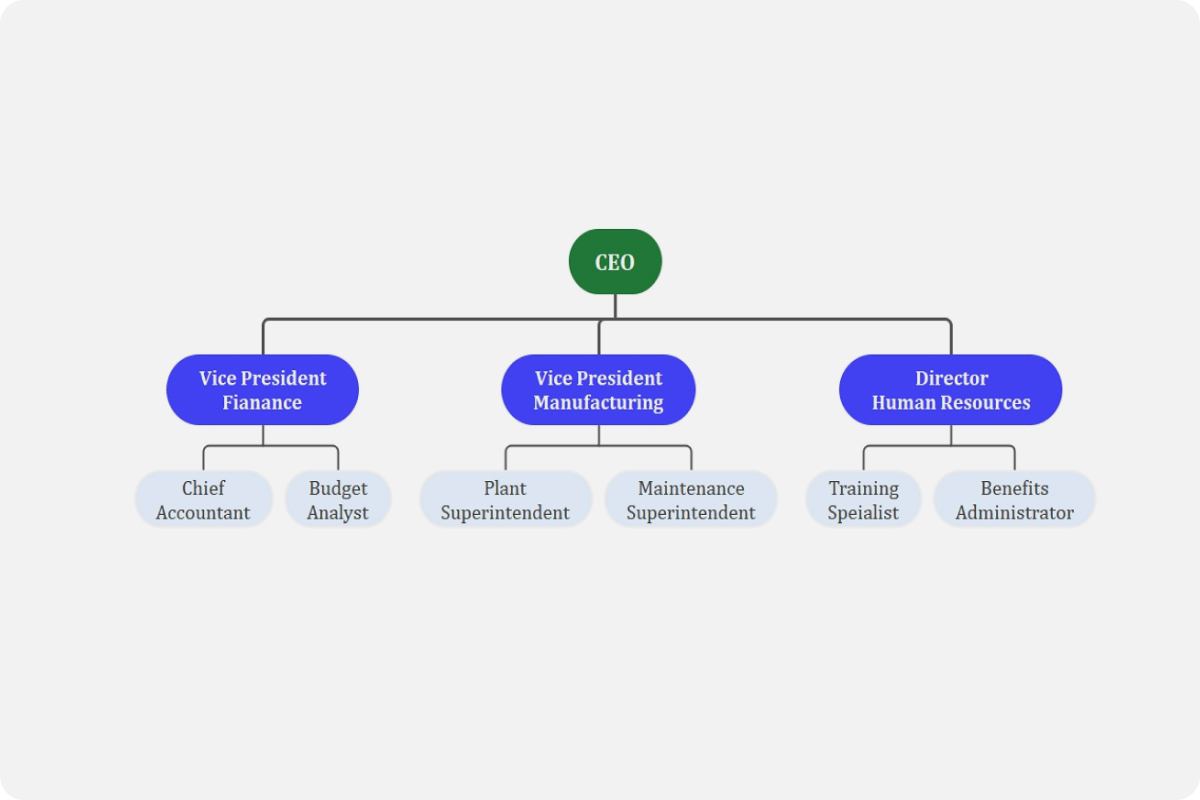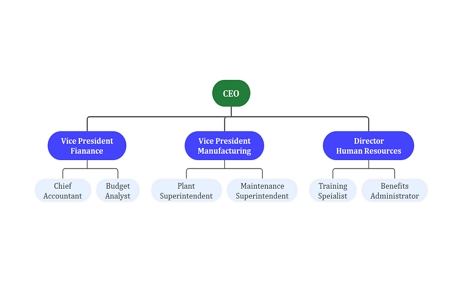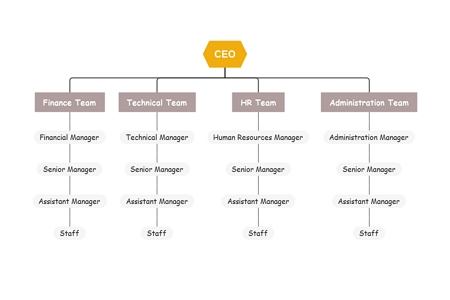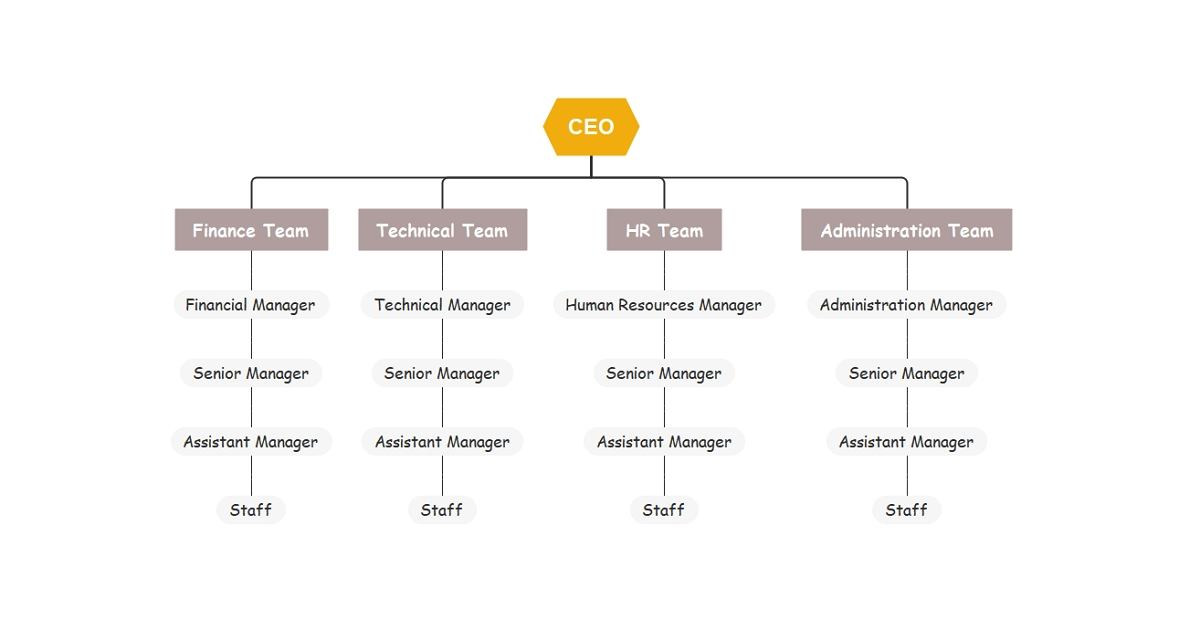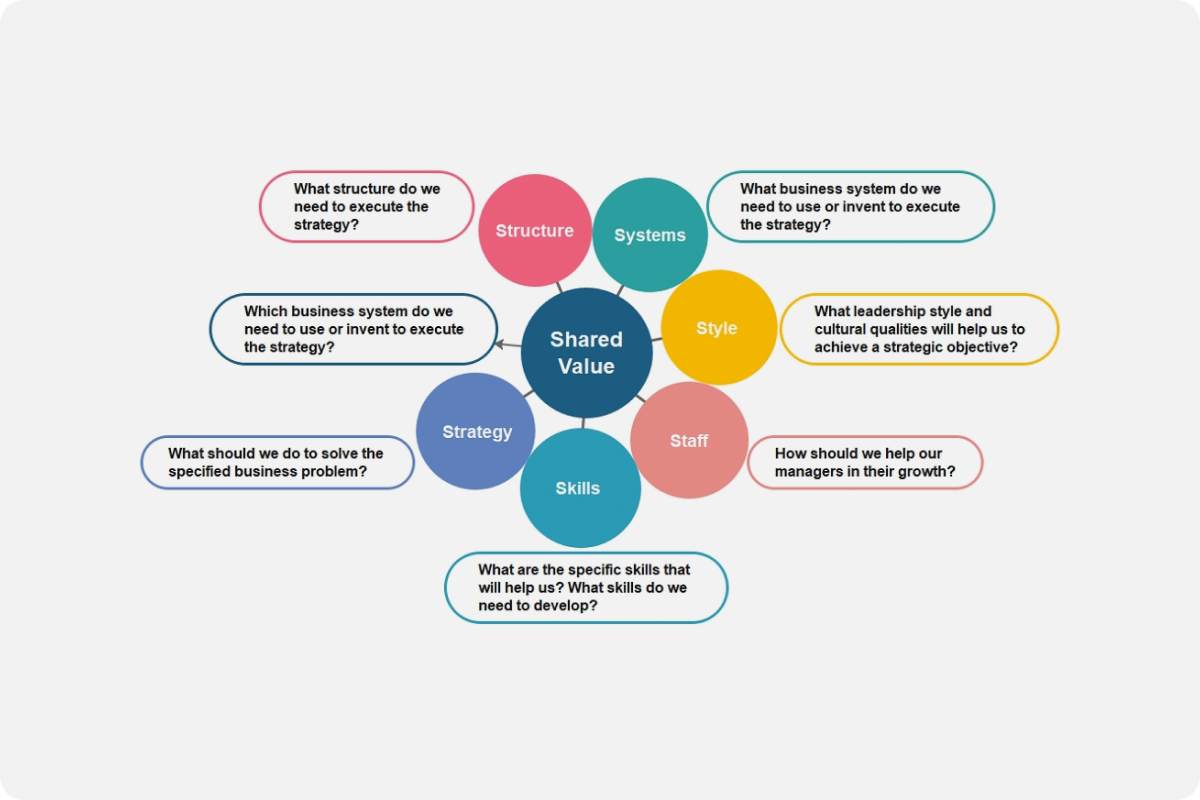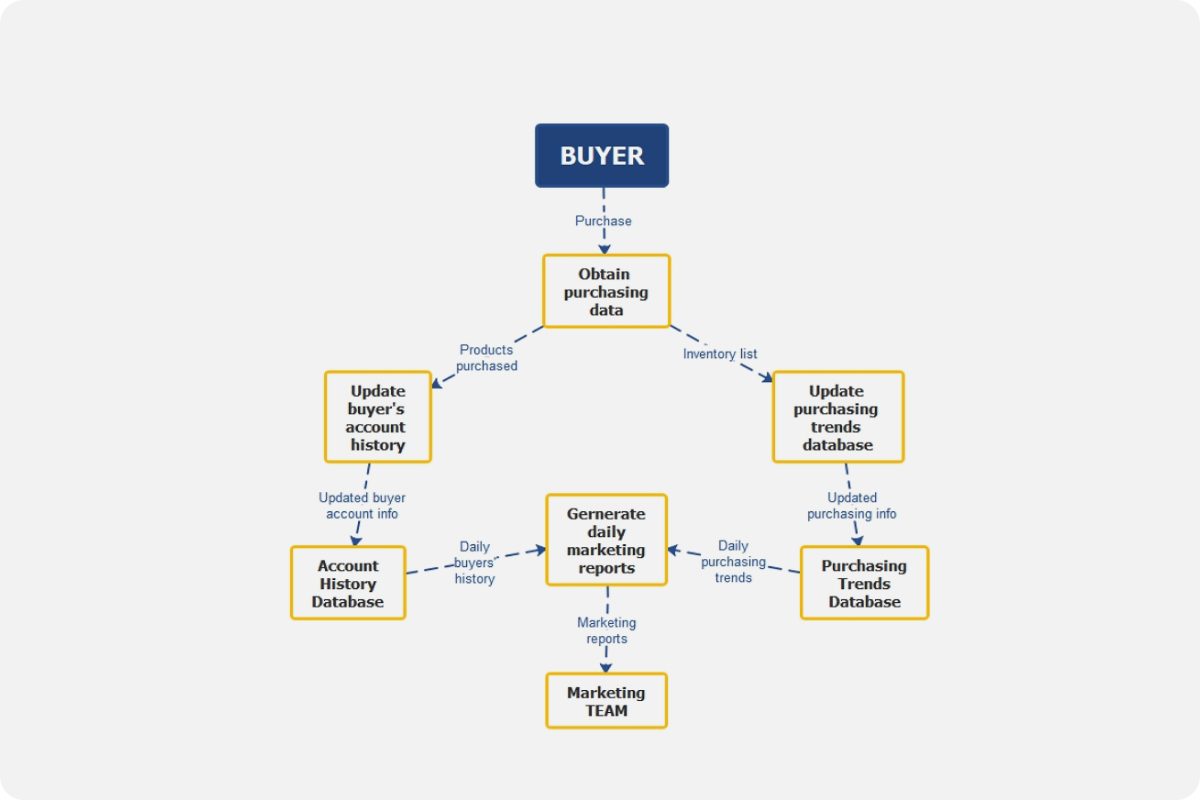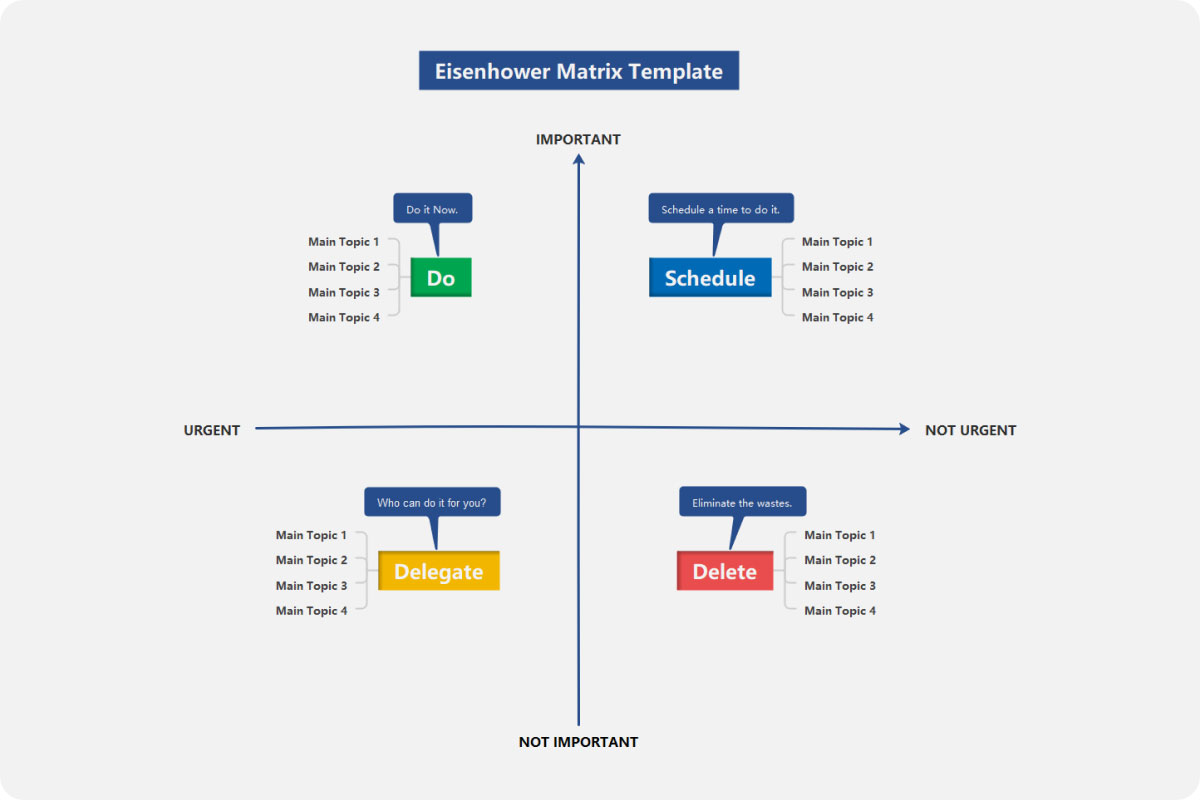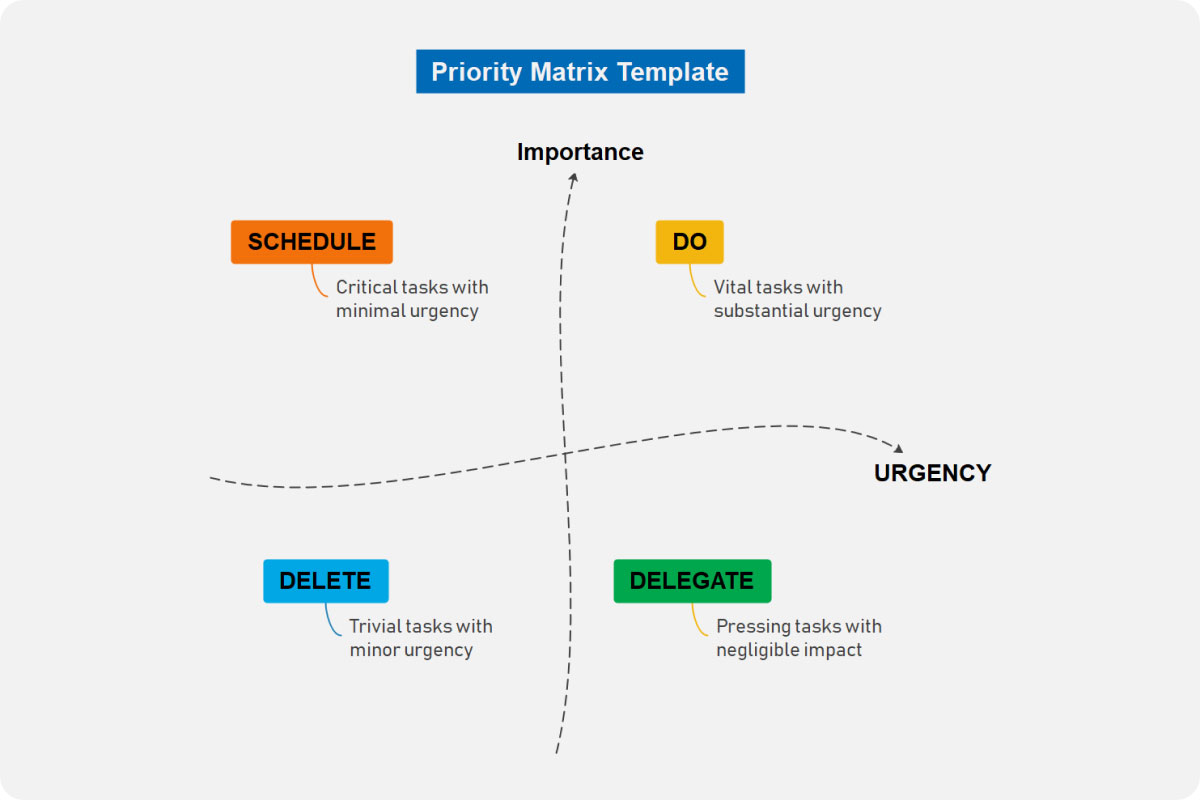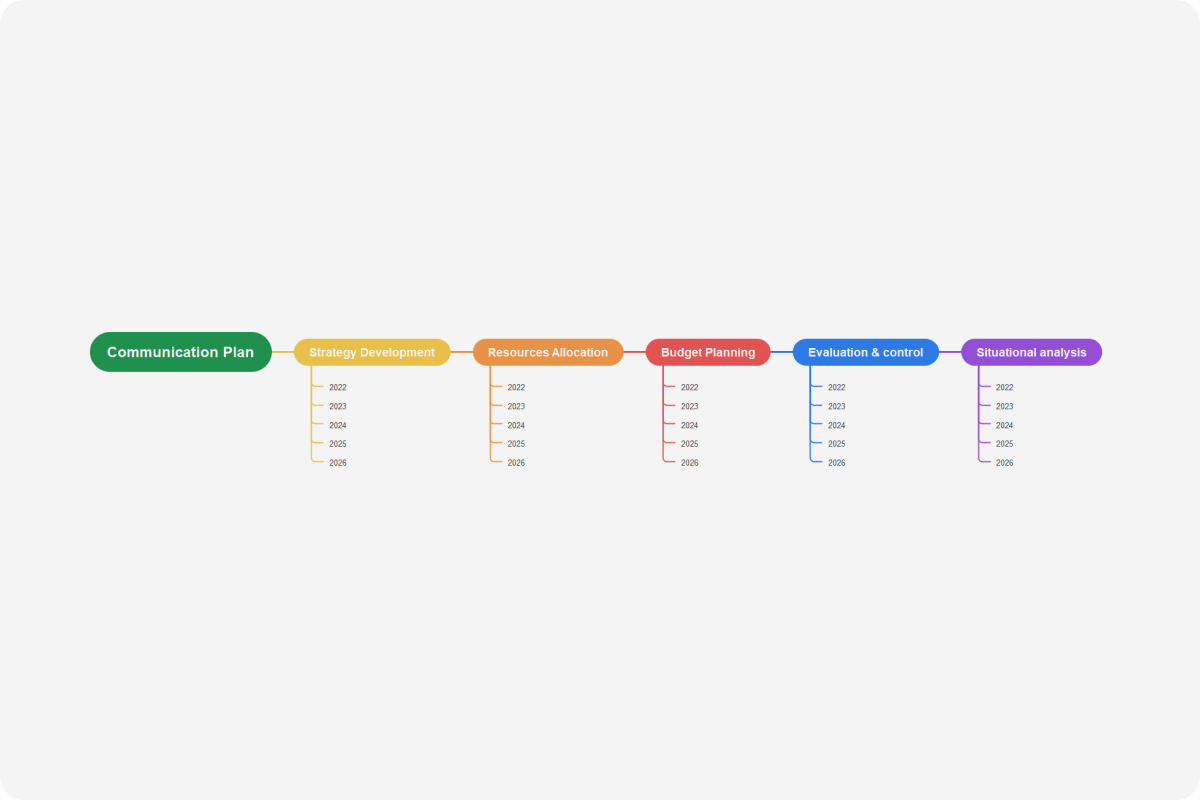What is an organizational chart?
An organizational chart is a framework that visually illustrates an organization's internal structure by specifying responsibilities, roles, and relationships between individuals within the group. Some refer to organizational charts as org charts or organization charts.
When you look at an organizational chart, they either broadly convey a company-wide or drill down to a particular unit or department. The diagram visually illustrates the employee's status in the hierarchy relative to other people within the company. For example, an associate producer will fall directly below the producer on the diagram, conveying that the former now reports to the latter. Organizational charts of today use several online tools such as shapes, lines, and images.
Regardless of a company's structure, org chart templates are handy when a company plans to modify its workforce or change the management scheme. Ultimately, the diagram allows employees to vividly see how their roles fit into the entirety of the company's framework.
What makes an organizational chart so effective?
Organizational charts clearly illustrate the hierarchy within a group or organization and specify relationships among every individual. This gives employees an excellent direction on who to report to and ensures that leaders and managers delegate tasks and responsibilities accordingly. Companies that use org charts also gain significant benefits, which streamline communication and drive efficiency.
Perform organization tasks
Org charts empower managers and executives to accomplish administrative tasks and see organizational requirements at one glance. They can view job vacancies, pending applications for open positions, execute performance appraisals, create corrective actions, and more. By doing all of these using org charts, managers and executives can expedite the process, which typically requires several back-and-forth communication and coordination.
Clearly specify a chain of command
In organizations with more than hundreds of people, it's easier to lose sight of the chain of command. Having a grasp of the chain of command within the company is essential when identifying the appropriate person to report to when particular circumstances happen. Organizational charts guide employees in clearly identifying all team leaders within the company. It lessens the amount of time wasted weighing and possibly debating who to pass on information to.
With technology evolving daily, you can maintain the structure electronically within the information system to allow specific workflows like position requisitions and leave requests to be automatically routed to designated executives and managers for approval.
Understand the workforce's needs
As executives have a bird's-eye view of the company structure, it will be easier to analyze its needs. Company heads will be able to see and understand which departments need additional people and which areas in the company are overstaffed. This helps companies balance employees and teams and ensure that managers have enough members to reach quota, goals, and objectives.
An organizational chart template is handy to guide executives in organizing their workforce. Creating an org chart within your company optimizes your organization in terms of communication and efficiency.
Types of organizational charts
With so many organizational chart examples today, you might be confused about what template to choose. Before going deeper into creating your org chart, here are a few kinds of org charts you can base your diagram from:
Functional top-down
You can also refer to the functional top-down diagram as the business organizational chart template. This structure looks like the traditional org chart where it illustrates the C-suite at the topmost, succeeded by the senior management and middle managers, among others. The framework is divided into conventional departments, including marketing, IT, human resources, operations, finance, based on every employee's functional role.
With this organizational structure, individuals are grouped based on similarities in skill sets and specializations. The downside of this structure is the organization might experience a lack of communication and visibility with other departments.
Matrix organizational chart
When you look at a matrix org chart, it visually illustrates an organization where employees are classified into teams according to products or projects and are usually led by project or product managers. All of them can also report to functional managers. This structure can also be referred to as a project organizational chart template that facilitates better, more open communication and creates a dynamic and flexible work environment that can immediately shift resources when needed. However, this can possibly trigger frustration and confusion with a load of supervisors and several priorities.
Divisional structure
A division org chart is a diagram where a company organizes various product lines or specific geography. An example would be a car company with divisions of SUVs, electric cars, and sedans. Every division has its corresponding functional structure, such as marketing and IT. Remember that an organization uses this framework when one division can work independently from another.
Flat organizational chart
Derived from the word itself, a flat org chart illustrates a few or no levels of management structure between executives and all other company members. It can be confusing for some, but this framework promotes self-management and enhanced decision-making capacity for every employee. Smaller entities primarily utilize this org chart, but it is sometimes used in larger companies.
When to use an organizational chart template?
Not all companies and organizations use org charts the same way. Most companies today utilize organizational chart software instead of the traditional one. Regardless of how you create an org chart, here are some instances when you need to use an org chart template.
New-hire onboarding
For a newly hired employee, it can be a handful to be familiar with your job and at the same time get to know who you are working with. Surely the onboarding process can take a while, as new hires need to learn about their coworkers and who to report to. Being introduced to several people in a day can be overwhelming, frustrating, and confusing. Most new hires want to front a good first impression on their first. However, if they do not know where to go for information, they spend more time searching instead of being productive.
With technology, organizational charts today can be accessed online. Companies can provide this to new hires to be familiar with the people they are about to work with. Online diagramming tools are readily available today where companies can provide images on their charts for better familiarization, especially for new employees.
Budgeting
You use an organizational chart template when executives plan to create budgets for the company. Using the org chart, they will see all the individuals working for the company, their roles, and their needs to accomplish their tasks. The framework is also essential when assessing healthcare costs, organizing team buildings and group events, giving appraisals, promotions, bonuses, and providing departments with the funding they need for operations.
Staffing
An organizational chart illustrates the different roles of individuals in the company. This can help human resources specialists and managers identify which additional staffing needs are necessary to help the company function efficiently. By viewing the chart and various capabilities of employees, managers can make the required adjustments or hire new people to fill roles.
Motivating Staff
An organizational chart works both ways. It benefits the employees and the managers. Employees can view an org chart's template to see their roles and who they directly report to. Other than that, they can also use the chart to have a better understanding of promotional opportunities
For newly hired marketing assistants, they may see themselves taking the path of social media marketer, marketing specialist, digital marketing supervisor, marketing manager, and director of marketing. The chart serves as their motivation to have that career path within the company if it is what they desire.
Communicating
Creating an organizational chart is not only for display purposes; it allows efficiency in communication. Since all the employees and their positions are printed on the chart, employees will have a quicker way of contacting the right people when they need information. As a result, it will also help businesses to be more productive.
Some companies even base their charts on templates since these examples are strategically built to illustrate company structure effectively. Communication is vital in any organization for efficient work functions and for building rapport among employees, especially those newly hired.
Organizational Chart Examples
An org chart template can also be called an organogram template. There are thousands of templates and examples of organizational charts online that you will find it very hard to choose what to use. Online diagramming tools today give you the option to use prebuilt templates, and all you have to do is fill in the empty boxes with details, or you can also create your org chart if you want to be unique from other illustrations. Here are examples you can base your diagram from:
This illustration looks like a flat structure, one of the org chart types previously discussed in this article. Remember that a flat organizational chart can have a few levels or none. In this case, it only involves one level. When using this structure, ensure to replace the label on the boxes with the exact names of employees. You do not want your coworkers second-guessing who is who because the org chart looks so vague.
The flat structure type of org chart usually applies to small companies. Suppose you are working in a startup advertising company and tasked to create an org chart; you can use this framework. Instead of boxes, you can use images to emphasize each node. It is a small company, but it can bring a new look to a diagram if you put photos and enhance it with colors.
Example 1
22 structures & 47 themes & 750+
cliparts
Support Win, Mac, Linux, Android, iOS
Advanced import & export options
On-premises software for business
Enterprise-level data security
12 structures & 33 themes & 700+
cliparts
Access diagrams anywhere, anytime
Templates Gallery
Team management & Project management
Real-time Collaboration
Example 2
The diagram below is a rather extensive organizational chart example. Unlike the first chart, which only needed a few levels and boxes, this one below involves several people from different departments. When looking at it, you would expect that this example is fit for large companies and organizations. This can also be called a functional top-down organizational chart. The one you usually see when you visit business establishments. Regardless of chart type, you can always customize the charts to your liking when creating them online. You can even insert the company logo as a background if you like.
